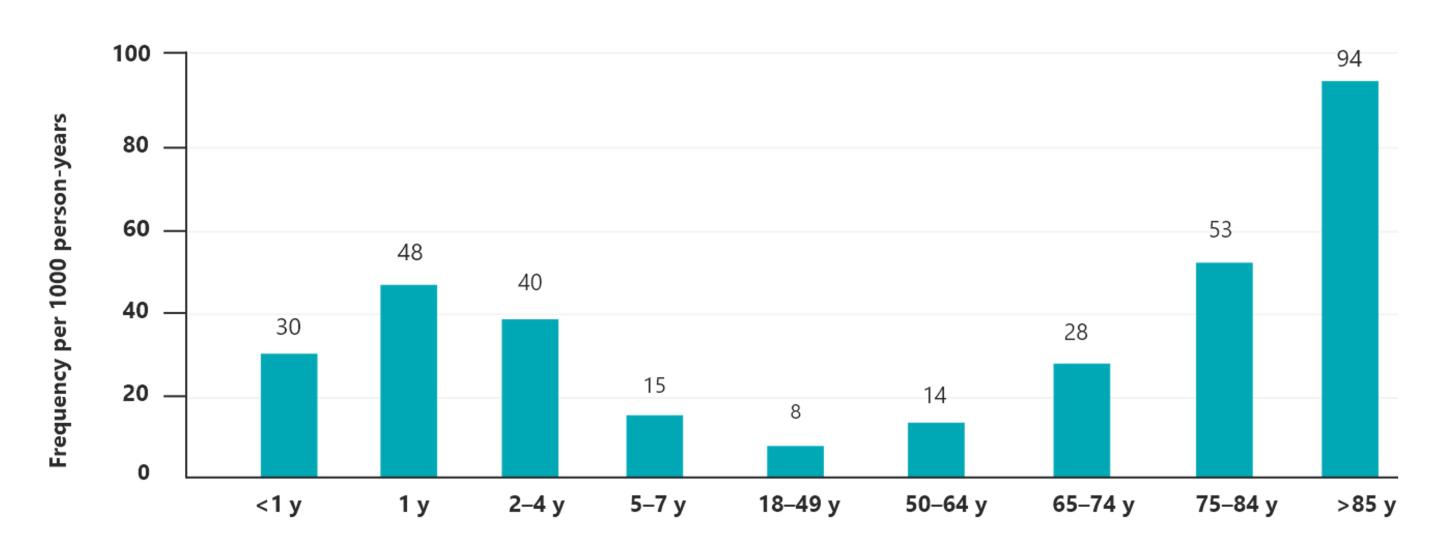CAP is a substantial cause of morbidity and mortality in the US. Together with influenza, pneumonia was the ninth leading cause of death in the USA in 2020, and was associated with a mortality rate of 17.1 deaths per 100,000 individuals.3 Placed in context, mortality for patients with CAP is higher than for those with other infections and patients who are admitted into hospital for other reasons, after adjusting for important variables.2
Patients who do not require hospitalization have a lower mortality rate, of less than 1%. Short-term mortality (30-day) for hospitalized patients ranges from 4% to 18%; however, for patients in intensive care, this rate can reach 50%.2 One third of hospitalized patients will die within 1 year of their inpatient stay.4 Predictors of long-term mortality include age, comorbidities, frailty, cardiovascular complications, inflammation and the severity of the initial insult.2

